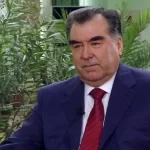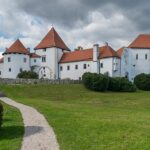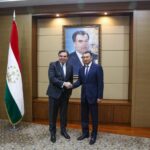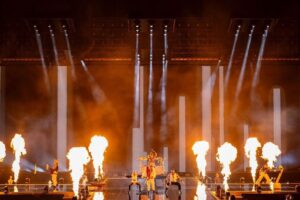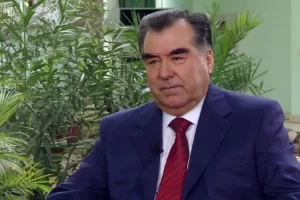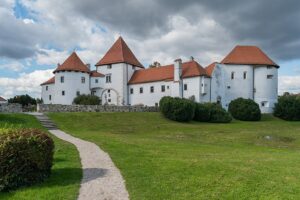If it follows the pattern set in previous years, the 32nd anniversary of the wartime fall of the Croatian city of Vukovar will not be topic of particular interest for the Serbian media and general public on Saturday.
A couple of media outlets will publish news pieces about the ceremony the Croatian government is holding in Vukovar, saying it commemorates something like “the anniversary of the Yugoslav People’s Army entering Vukovar” or “the end of the battle for Vukovar”. Some Serbian NGOs will hold a small memorial event in Belgrade for the victims; few Serbian media will report on it.
The Yugoslav People’s Army, JNA, helped by the Serb Territorial Defence fighters and paramilitaries from Serbia, launched an all-out attack on Vukovar on August 25, 1991. After a siege lasting 86 days that left the city in ruins, the main Croatian defensive forces in the town centre surrendered on November 18; the last Croatian troops surrendered two days later.
Around 3,000 soldiers and civilians died during the siege and its aftermath, including 86 children. After Vukovar fell, the non-Serb population was expelled, and some 7,000 prisoners, both soldiers and civilians, were taken to detention camps in Serbia.
The fall of the city is commemorated in Croatia as a major national tragedy. In Serbia however, the full truth about what happened remains disputed by many people, said Nikola Gajic, a Serbian expert on the memory politics of the 1990s wars.
“It still hasn’t been processed in the sense of people being aware of how many people captured in Vukovar were later in camps in Serbia,” Gajic told BIRN in an interview at the Leibniz Institute for East and Southeast European Research in Regensburg, Germany, where he works as a research associate.
He explained that accepting the truth about 1990s war years has become more difficult for people in Serbia as the years have passed.
“If someone needs to face up to so many issues – things that have been kept silent for many years – then it is somehow easiest not to talk about it and therefore to have a culture of remembrance that amounts to forgetting,” he said.
National unity through self-victimisation
After Vukovar fell, around 260 Croatian captives, both wounded soldiers and civilians, were executed at the nearby Ovcara Farm and at other locations. The city lay in ruins, with 85 per cent of the buildings destroyed by artillery fire.
The International Criminal Tribunal for the Former Yugoslavia convicted two JNA officers of wartime crimes in Vukovar – colonel Mile Mrksic, who was sentenced to 20 years in prison, and major Veselin Sljivancanin, who was jailed for ten years.
According to the UN-backed court’s verdict, Mrksic decided to withdraw JNA officers and soldiers guarding prisoners of war in Ovcara, enabling Territorial Defence fighters and paramilitaries to kill the captives.
The verdict said that Sljivancanin, “despite being responsible for the security of prisoners of war and having visited Ovcara at a time when they were being mistreated, did nothing to stop the beatings or to prevent their continuation”.
The verdict made what happened in Vukovar much clearer to the Serbian public, said Gajic. The Belgrade authorities could no longer pretend that the city had been ‘liberated’ by the JNA “because it was completely clear the way they participated in [the crimes]”.
But although various Serbian governments have addressed the legacy of the 1991-95 war in Croatia in different ways, Gajic said that the idea of Serbs as victims has been a constant, whoever was in power. There has never been any attempt to face up to Serbia’s responsibility for the conflict or its role in any crimes that were committed.
“The constant that relates to the war in Croatia is that self-victimisation,” he said.
Suffering replayed as political theatre
Another important part of the problem with the way Serbian institutions have dealt with the Croatian war is that specific incidents in which Serbs were the victims have been historically decontextualised, Gajic continued.
Such incidents have been “completely removed from the context in which they happened” and then “connected to things that happened before”, such as crimes committed against Serbs during World War II by Croatia’s Nazi-allied Ustasa movement, he explained.
While ignoring the anniversary of the fall of Vukovar, the Serbian authorities dedicate substantial resources to memorialising the anniversary of the Croatian Army’s Operation Storm, which caused 200,000 Serbs to flee Croatia over four days in August 1995.
Since 2015, Serbia and Bosnia’s Serb-led entity Republika Srpska have been organising a major televised commemoration of Operation Storm with a religious service and speeches by the Serbian Orthodox Church patriarch and political leaders, interspersed with dramatised interludes in which actors portray refugees in the convoy fleeing Croatia on tractors.
The commemoration is a manufactured amalgam of images intended to represent the Serb nation and its historical victimhood, according to Gajic.
“All those victims are generalised, homogenised into the same structure, represented by that stereotypical tractor with a trailer, to which certain symbols of our national identity, which are related to religion, are attached… and then a collage of things intended to represent some sort of national unity is assembled, which is constantly emphasised [by Serbian political leaders],” he said.
The fleeing refugees are depicted as part of a continuum of Serb historical suffering as part of the narrative that is being manufactured by the commemoration, rather than as victims of specific circumstances, he explained.
“The victims of Storm are never referred to as just the victims of Storm; even on that [anniversary] day, they are not given primacy, they are inserted into a collective victimhood and put into the same context with all the other things that happened [to Serbs] in 1999 [during the NATO bombing of Yugoslavia] and 1941 [during the fascist Ustasa movement’s rule in Croatia] and whenever,” he said.
This year’s Operation Storm commemoration was marred by a new controversy. While Serbian President Aleksandar Vucic and Bosnian Serb leader Milorad Dodik were speaking, the video backdrop, which was intended to depict Croatian Serb refugees’ suffering, showed an image of a Bosniak woman, Sabina Mujkic, and her infant daughter as they fled the Bosnian village of Zepa in the wake of the 1995 Srebrenica massacres by Bosnian Serb forces.
The child, Nermina Mujkic Guso, now an adult, said the family was “in shock” at the way the photo was used. A Serbian PR and marketing agency, Pozitiv, which made the commemorative video, apologised and said it took “full responsibility for the unintentional mistake”.
Gajic argued that all the blame cannot be put on the marketing agency’s staff because they are “part of Serbian society”, where war victims are “only represented in one, simplistic way”.
This generalised representation means that “who is who, who is doing what, who is where and who are the victims of which crime is completely lost”, he argued.
The topics addressed by the state-sponsored Operation Storm commemoration are intentionally selective, he added: “There is a very clear limit to what is really being remembered, and that is only the suffering that is useful – anything that doesn’t benefit the ruling authority or makes society face its mistakes is not mentioned.”
As well as Vucic, Dodik and the Serbian patriarch, one of the refugees gives a speech each year at the annual commemoration. Gajic noted that most of these speakers are women. What is not mentioned is that many of these women refugees’ male family members were forcibly mobilised after they reached Serbia and sent back to fight in Croatia.
“In this context, yet again, it’s terrible – she’s talking about men who were returned to the front lines in less than a month or in a month, where many of them died,” he said.
In Serbia, despite the verdicts from the Hague Tribunal, the official narrative remains that the country did not actively participate in the wars of the 1990s and bears no responsibility for crimes committed in places like Vukovar.
The terminology used to perpetuate this narrative is now being passed on to younger people with no direct experience of the wars, said Gajic.
“We are already facing the fact that [for] the generations who were born after the 2000s, this is a secondhand memory that they are acquiring, either internally, from families, or through the media, [state] institutions and part of civil society as well,” he said.
Source : Balkan Insight


